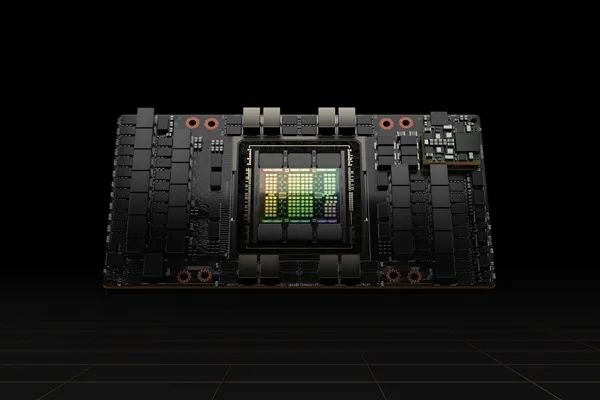The official announcement from Loongson Technology states that recently, the Loongson 2K3000 and Loongson 3B6000M have successfully completed tape-out, and preliminary functionality and performance assessments have been completed, with all indicators meeting expectations.
The Loongson 2K3000 and Loongson 3B6000M are different packaging versions based on the same silicon wafer, targeting the industrial control application field and mobile terminal field, respectively.
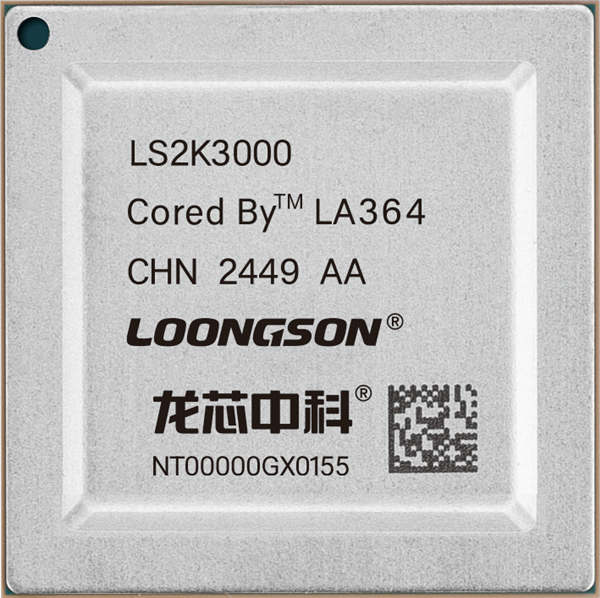
This chip integrates 8 LA364E cores based on the self-developed Loongson architecture, achieving a single-core fixed-point score of 30 points in SPEC CPU 2006 Base at 2.5GHz.
It also integrates the second-generation self-developed GPGPU core “LG200”, which has significantly improved graphics performance compared to the first-generation LG100 integrated in the Loongson 2K2000, and supports general computing acceleration and AI acceleration, with a single-precision floating-point peak performance of 256 GFLOPS (256 billion operations per second) and an 8-bit fixed-point peak performance of 8 TOPS (8 trillion operations per second).
It includes an independent hardware codec module that supports various mainstream video formats and supports three display interfaces: eDP/DP/HDMI, achieving 4K HD processing performance of 60 frames per second;
It integrates a secure and trusted module, which not only has national cryptography SM2/3/4 hardware algorithm modules but also includes a reconfigurable cryptographic module for software programming use;
It features a rich set of IO expansion interfaces, including PCIe 3.0, USB 3.0/2.0, SATA 3.0, GMAC, eMMC, SDIO, SPI, LPC, RapidIO, CAN-FD, etc., to meet the application needs of different fields.
Currently, the OpenCL computing power framework and related AI acceleration software for the Loongson 2K3000 (3B6000M) have completed preliminary testing, and related supporting software is being improved.
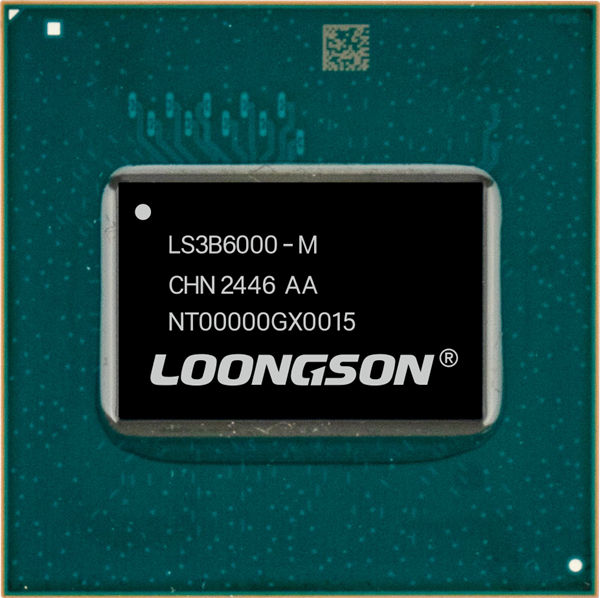
Dozens of companies have begun to adopt this chip for product design, including industrial control and information system manufacturers.
The successful tape-out of the Loongson 2K3000/3B6000M marks that Loongson Technology has systematically mastered the key core technologies of general processors, graphics processors, AI processors, and basic software design after more than 20 years of accumulation.
The development of Loongson processors, while consolidating general processors and graphics processors, has now entered a new era of vigorously developing AI processors.
With the successful tape-out of the Loongson 2K3000/3B6000M, the Loongson general CPU has formed a complete series of products across desktop, server, and terminal lines, capable of providing high-performance, cost-effective CPU products for different fields.
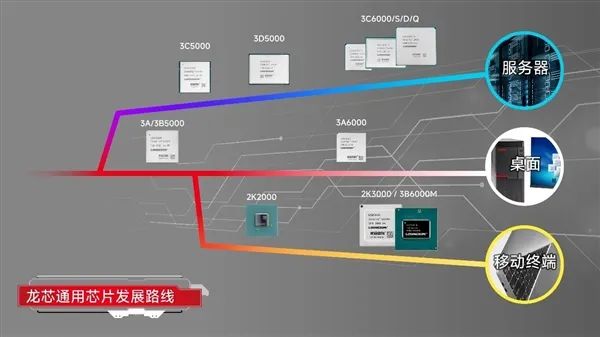
In the DRAM memory industry, we are also beginning to have more say and initiative!
By the end of 2024, China’s Changxin Memory and Fujian Jin Hua are actively expanding production capacity for DDR4 memory while aggressively cutting prices, being 50% cheaper than the three major manufacturers, even cheaper than second-hand chips, directly causing turmoil among manufacturers from the US, Japan, and Taiwan.
Faced with this situation, Samsung, SK Hynix, and Micron have even decided to stop DDR4 production by the end of this year.
According to recent reports, the victorious Chinese memory manufacturers, having gained the initiative in the DDR4 market, have decided to raise prices again.
Of course, this is not entirely within the control of Chinese manufacturers; it still depends on the broader environment.
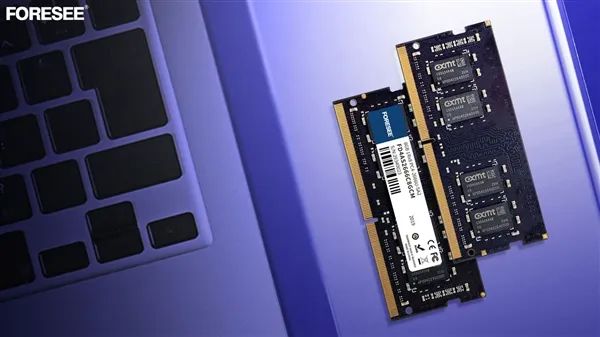
The latest report from TrendForce indicates that in the first quarter of this year, downstream memory brand manufacturers have rushed to ship in advance to cope with changes in the international situation, and the DRAM supply chain inventory has been greatly digested.
Looking ahead to the second quarter, traditional DRAM memory prices, excluding HBM, are expected to stabilize, with DDR5 prices remaining stable and no longer declining, while the price drop for DDR4 memory in the PC and server sectors is expected to narrow to 3-8%, but is expected to rise by 0-5% in the consumer electronics sector.
At the same time, LPDDR4X memory prices are expected to drop another 0-5%, while LPDDR5X memory is expected to rebound and rise by 0-5%.
Now, with the price increase actions of Chinese manufacturers, DDR4 memory chip prices are expected to generally rise by up to 5% in the second quarter.
Additionally, the back-to-school season in the third quarter will also create a small peak, and manufacturers will prepare in advance, leading to a typical upward trend in memory prices.
PS: NAND flash memory is also starting to rise in price across the board, with no exceptions among major manufacturers, including Yangtze Memory.
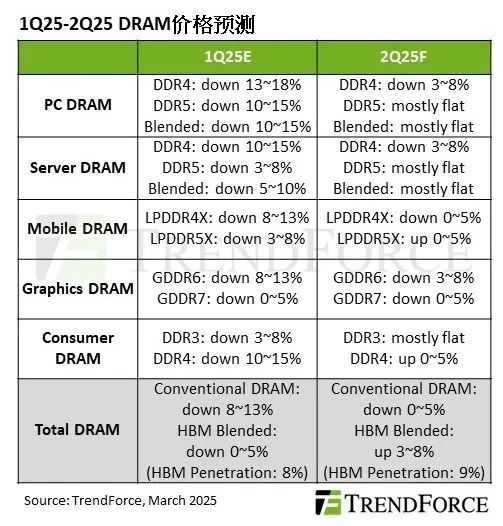
So, why do we insist on doing everything independently? Can’t we just buy? In fact, it’s not just about whether they will sell to you; even if you manage to develop it, the Westerners will find ways to obstruct you.
Look at Russia.
According to NRC reports, a 43-year-old Russian engineer, German A., has been accused of stealing confidential technical information from ASML, GlobalFoundries, NXP, and TSMC to help Russia establish its own 28nm wafer fab.
According to the charges, he stole 105 internal documents from ASML and 88 internal documents from TSMC, involving information on semiconductor production and various chip manufacturing equipment.
The documents did not contain complete blueprints for designing and building a wafer fab, which is a more advanced technology, but were still considered confidential and sufficient to support the establishment of a complete 28nm process production line, adequate for military and other fields.
The investigation revealed that German A. transmitted the information to Moscow via cloud storage, social applications, and USB drives, earning 40,000 euros in the process.
He was also accused of attempting to steal chemical vapor deposition tools and transport them to Israel, but ultimately they did not reach Russia.
In August 2024, German A. was arrested by the CIA, and a month later, ASML and NXP reported being victims of espionage.
Western media claim that one person like German A. cannot steal all the information needed to build a 28nm wafer fab, but numerous similar spies working together could accomplish such a task.
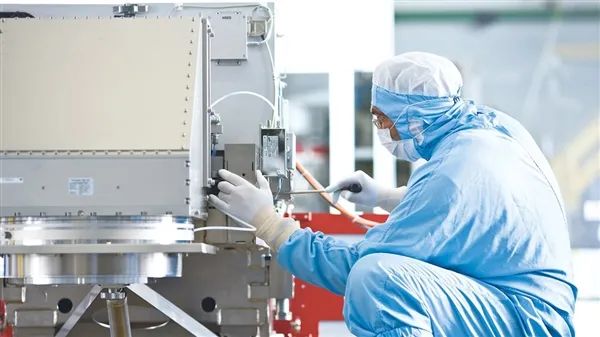
It is reported that German A. has worked in the semiconductor field for many years, having interned at the Belgian Microelectronics Research Center (IMEC) in 2008-2009, then joined the Greek research institution NCSR, and later worked at GlobalFoundries’ Fab 1 plant in Dresden, Germany.
In 2015, he switched to the Dutch startup Mapper, which developed a maskless lithography machine and established a small factory in Russia to produce MEMS microcontroller chips.
Mapper went bankrupt in 2018, and ASML acquired it under pressure from the US and the Netherlands to protect technology from leaking, with German A. and over a hundred other engineers joining ASML to work on optoelectronic chip manufacturing and participating in the invention of four patents.
It is said that he accessed two encrypted files unrelated to his work in December 2020, but did not trigger any internal security system alerts.
In 2021, ASML outsourced his work, and he subsequently left ASML.
In January 2022, he joined NXP in Nijmegen, Netherlands, under a temporary contract, and in May obtained a chemical vapor deposition device from a local company.
According to the charges, by the end of 2023, a Russian researcher approached him seeking information on building a 28nm wafer fab.
PS: The entire report is filled with the Western hegemonic mindset: if you develop, you must have stolen my technology!
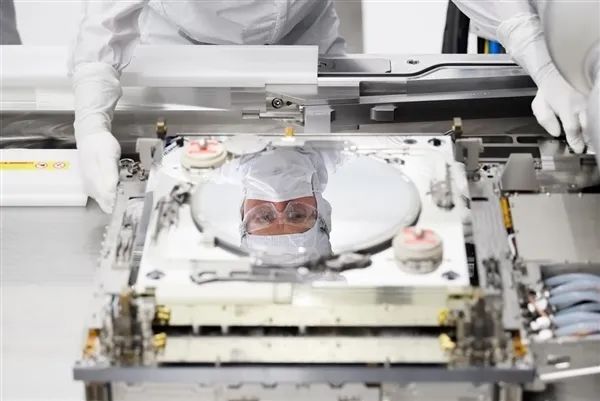
Of course, we still have significant gaps in certain areas, such as GPU computing, so for now, we can only buy, even if it is a trimmed version provided by them.
According to media reports, in the first three months of 2025, Chinese tech companies, including ByteDance, Alibaba, and Tencent, have made large-scale orders for NVIDIA H20 server chips, totaling as much as $16 billion (approximately 116.3 billion yuan).
The H20 chip is currently the most advanced chip that NVIDIA can legally sell to China, but its computing speed is still 15 times slower than the latest Blackwell chip.
However, insiders revealed that NVIDIA is combining the H20 with the high-bandwidth memory (HBM) used in its Blackwell system to launch a more powerful upgraded version of the H20, which is what most Chinese companies are purchasing.
Since the release of the DeepSeek AI model in January 2025, the demand for H20 chips in the Chinese market has steadily increased.
The surge in supply and demand has also brought capacity pressure; since NVIDIA did not secure enough capacity at TSMC in advance, even if they immediately expand production, it will still take six months to fulfill orders, causing most chips to be delivered no earlier than the fourth quarter.
This situation also brings potential risks: if the US issues new export bans during this period, NVIDIA may be unable to fulfill deliveries, customers may demand refunds, and inventory chips will need to find new buyers.
Since the H20’s performance is inferior to Blackwell, if they turn to other markets, NVIDIA may need to resort to price promotions to clear inventory.
